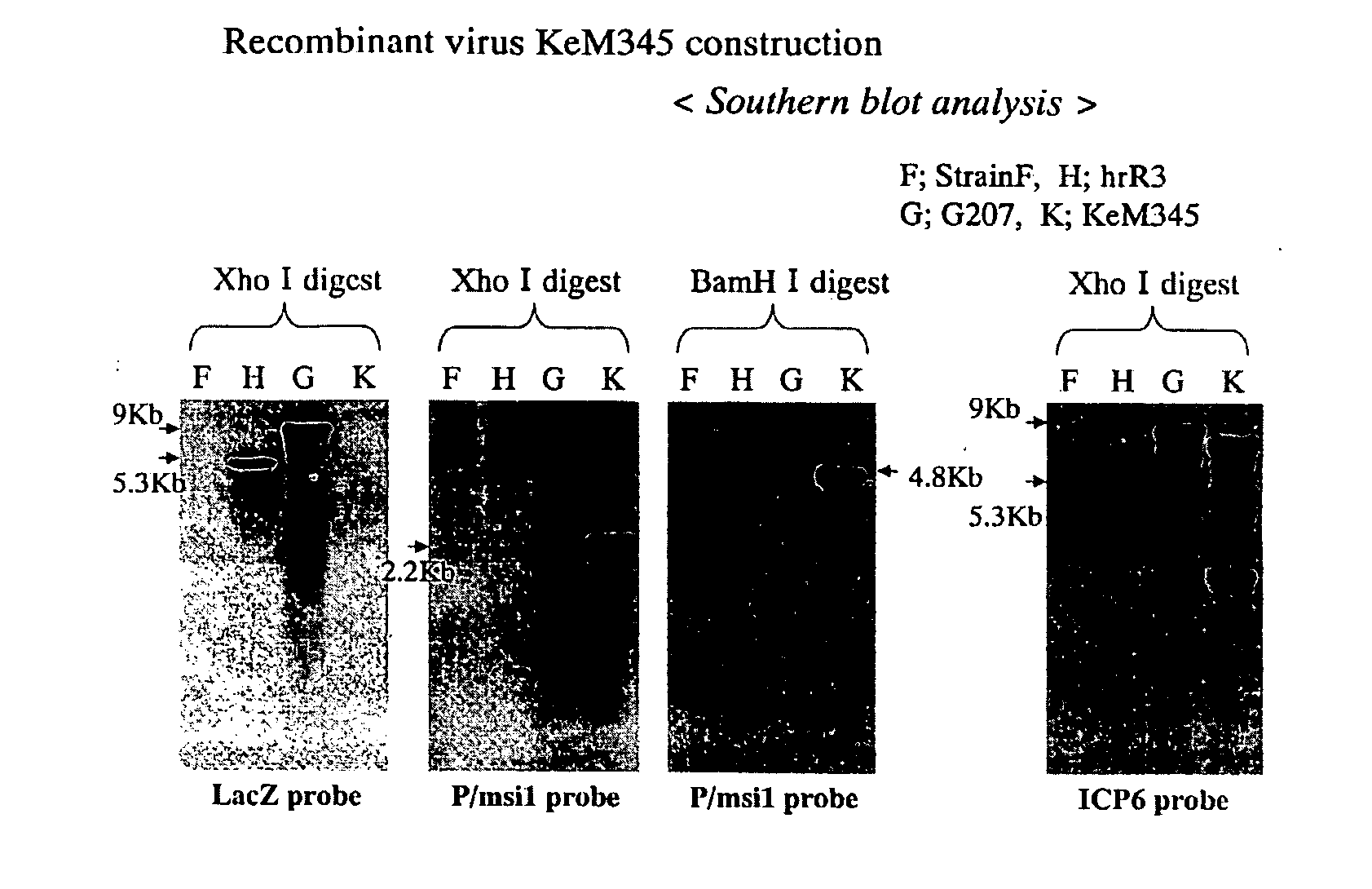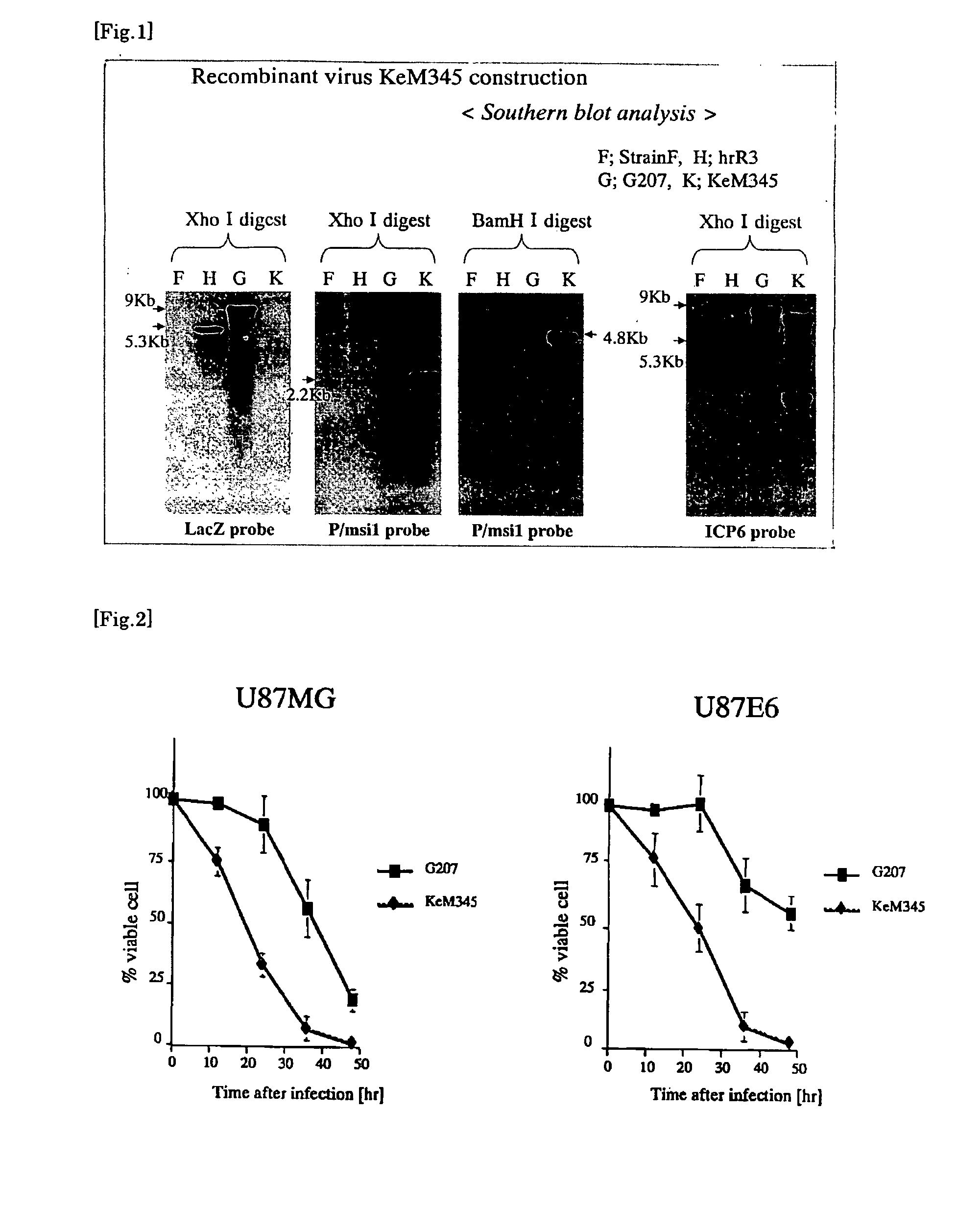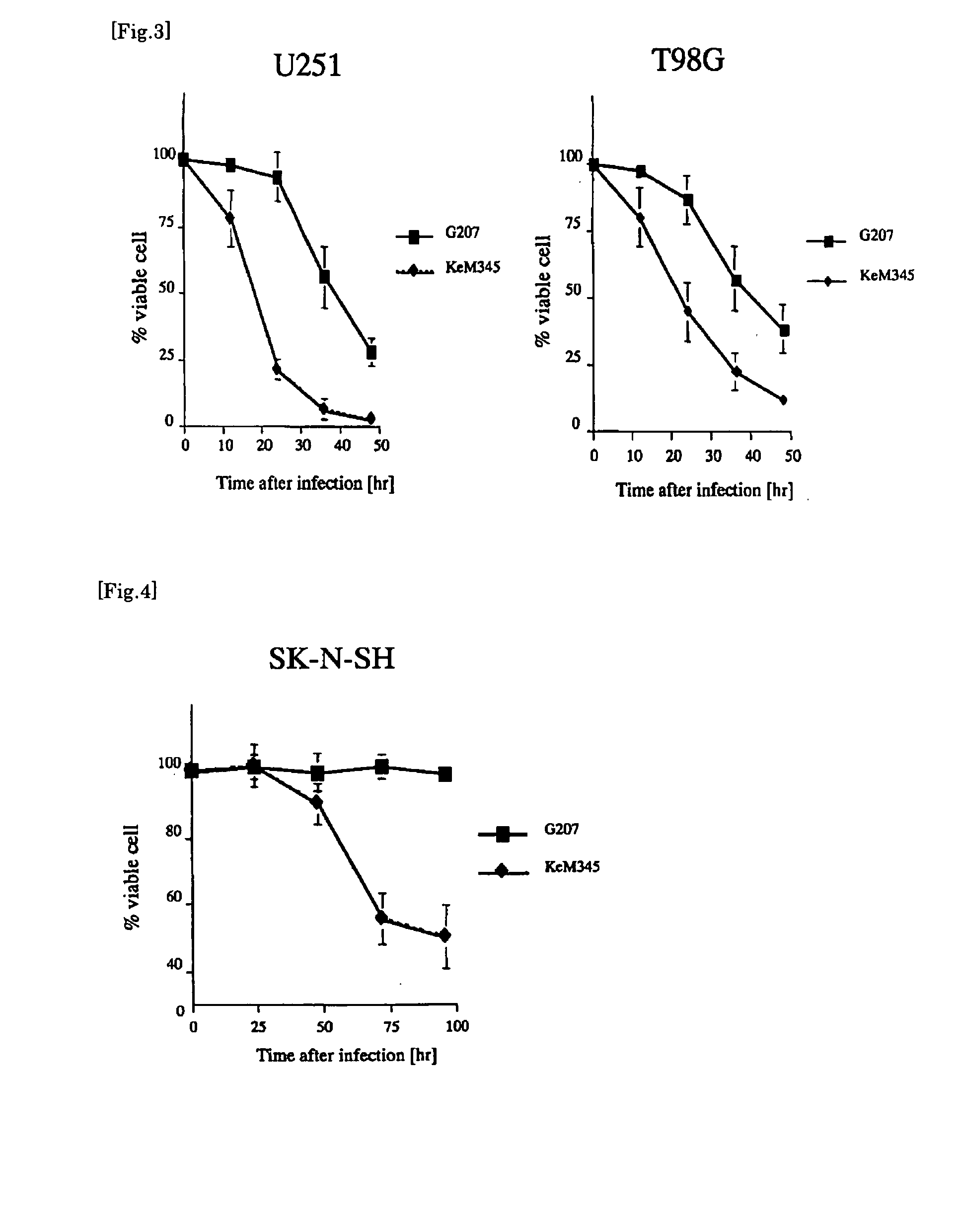Recombinant hsv useful for treatment of human glioma
- Summary
- Abstract
- Description
- Claims
- Application Information
AI Technical Summary
Benefits of technology
Problems solved by technology
Method used
Image
Examples
example 1
Preparation of Recombinant Virus KeM345
[0068]Amplicon plasmid pSRaP / Musashil: the γ34.5 gene (Kanai R et al. Gene Ther; advance online publication, Sep. 15, 2005; doi: 10. 1038 / sj.gt. 3302636 / Japanese Patent Laid-Open No. 2005-73653) was digested with restriction enzyme XbaI. Fragments of about 5 Kb having blunt ends were recovered and used as insert fragments (inserts). Each of the inserts has P / Musashil, a full-length γ34.5 sequence and a BGHpolyA sequence which were ligated downstream of P / Musashil. Subsequently, plasmid pKX2βG3 (Mineta et al. Nat Med, 1995; 1: 938-943) was digested with NdeI and EcoRV to obtain fragments with blunt ends. To each of these fragments, the insert was introduced and ligated to obtain plasmid pKX-P / Musashil:γ34.5. Plasmid pKX-P / Musashil:γ34.5 was then digested with restriction enzyme HindIII to obtain a linearized plasmid thereof. The linearized plasmid and viral DNA of G207 were introduced into a Vero cell by co-transfection...
example 2
Oncolytic Effect
[0070]Twenty four hours before infection with viruses, human derived-glioma cell lines (U87MG, U87E6, U251, T98G), human neuroblastoma cell line (SK-N-SH), human non-parvicellular lung cancer cell line (A549) and human colon cancer cell line (HT29 cells) were inoculated in individual 12-well plates in an amount of 2.0×105 cells. Infection of virus G207 or KeM345 was performed in PBS (0.3 ml) supplemented with 1% IFBS at an MOI of 0.01 plaque formation unit (PFU) / cell for 30 minutes. Furthermore, control cells were infected with an extract prepared from mock-infected cells in the same manner as in the virus infection process. The number of survival cells was determined by the trypan blue exclusion method, which was performed every 12 hours after the infection. The assays were all repeatedly performed three times. To check the feature of cytotoxicity of KeM345, examination was performed with respect to human derived-glioma cell lines (U87MG, U87E6, U251, T98G) and neur...
example 3
[0071]To a 6-well plate, cells (5.0×105) of each of cell types U87MG, U87E6, U251, T98G, SK-N-SH, A549 and HT29 were inoculated. Twenty four hours later, the cells were infected with viruses (R3616, G207, KeM345, StrainF). Viral infection was performed at an MOI of 0.01 in 0.5 ml of PBS supplemented with 1% IFBS for 30 minutes. Twenty four hours after infection, viruses were recovered from the wells and titration was performed. The number of plaques was counted and plaque-forming units per well (PFU / well) were calculated and indicated by Log PFU / well (FIG. 6). Experiments were all repeatedly performed three times. As a result, in human glioma derived cell line (U87MG, U87E6, U251, T98G), KeM345 produced a large number of progeny viruses (p<0.05, unpaired t-test) compared to G207, more specifically, produced about 100-fold of the progeny viruses of G207. The same results were obtained in SK-N-SH. In contrast, in the other cell lines (A549 and HT29), the amount...
PUM
| Property | Measurement | Unit |
|---|---|---|
| Therapeutic | aaaaa | aaaaa |
| Cytotoxicity | aaaaa | aaaaa |
Abstract
Description
Claims
Application Information
 Login to View More
Login to View More - R&D
- Intellectual Property
- Life Sciences
- Materials
- Tech Scout
- Unparalleled Data Quality
- Higher Quality Content
- 60% Fewer Hallucinations
Browse by: Latest US Patents, China's latest patents, Technical Efficacy Thesaurus, Application Domain, Technology Topic, Popular Technical Reports.
© 2025 PatSnap. All rights reserved.Legal|Privacy policy|Modern Slavery Act Transparency Statement|Sitemap|About US| Contact US: help@patsnap.com



